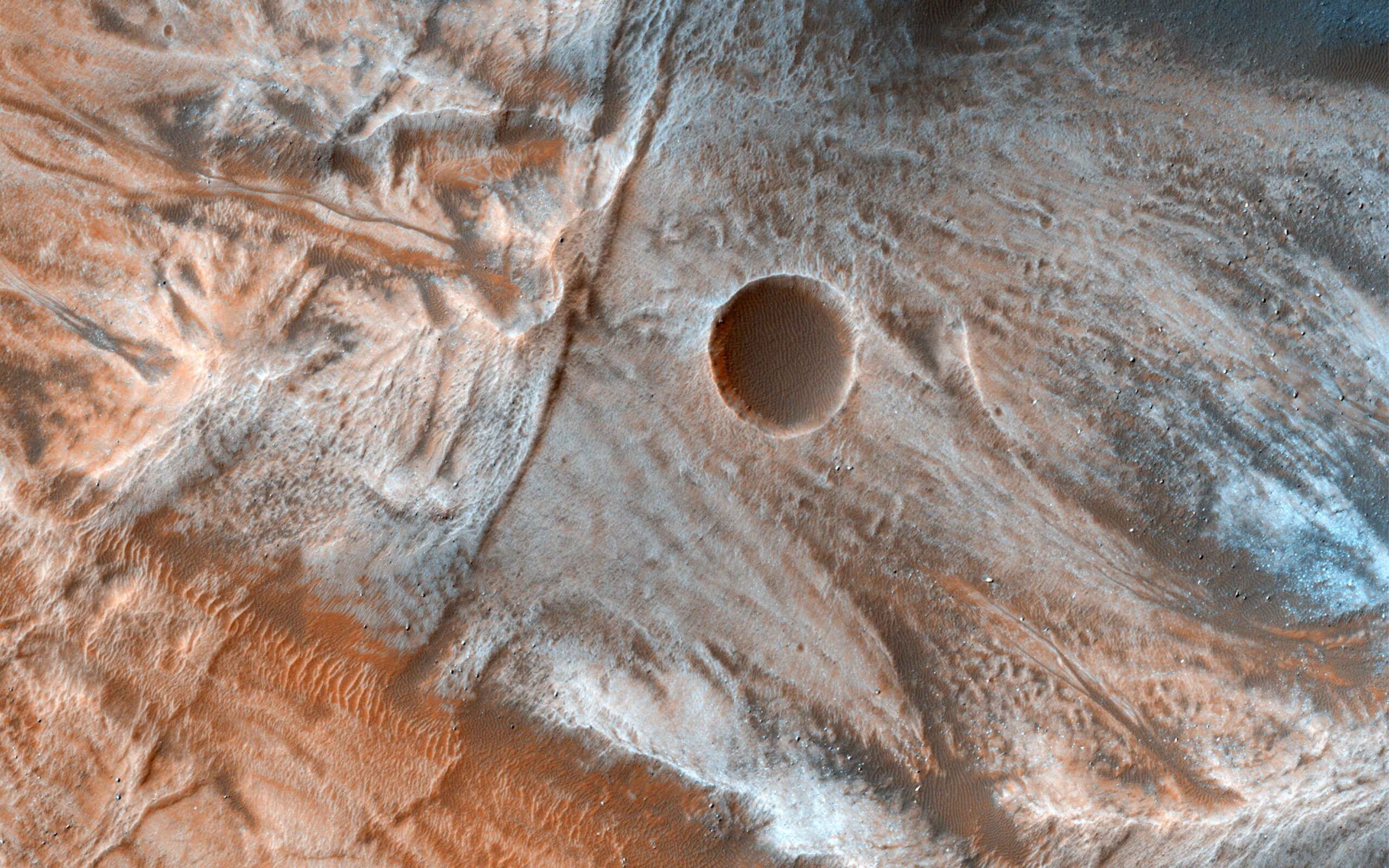A Mass of Viscous Flow Features: NASA Image of the Day
Usually when ones hears the words “viscous flow” you are not expecting to see something beautiful. No, usually it is preceded by the question: “Does this look infected?” and followed by the answer: “Dude, you should see a doctor.”
But in this case it’s actually quite stunning.
Images taken by the Mars Orbiter Camera (MOC) display features that resemble glaciers, or rather ice deposits resemble the movements of glaciers, meaning that it must be ice-rich and probably flowing recently. Not liquid water mind you, but flowing as glaciers flow which move slowly at a pace that is…well glacially.
This is important in that water is an essential requirement for life. Not that there is or was life on Mars (but maybe?) but that habitability in the future could be possible utilizing the natural features that are the essential environmental factors to support life. Or in other words colonization.
I want to go to Mars is what I’m saying.
Look, I realize that a very cool picture that shows evidence of ice on another planet is a far cry from saying that planet could actually support life, but I’m a science fiction writer and this is kinda my jam. When I see something like this it fills me with such hope and promise for us as a species. And my imagination goes wild with ideas and speculations for a beautiful future and amazing adventure. And seeing as how our world today is a bit…let’s say unpleasant…the idea of starting fresh on a new world is intriguing to say the least.
In other words we could be asking the question: “Does this planet look infected?” followed by the answer: “Dude, you should move to another one.”
We could call our spaceship the Viscous Flow.
A Mass of Viscous Flow Features
Viscous, lobate flow features are commonly found at the bases of slopes in the mid-latitudes of Mars, and are often associated with gullies.
These features are bound by ridges that resemble terrestrial moraines, suggesting that these deposits are ice-rich, or may have been ice-rich in the past. The source of the ice is unclear, but there is some thought that it is deposited from the atmosphere during periods of high obliquity, also known as axial tilt.
The flow features in this image are particularly massive and the bounding scarps appear very high standing and are layered as well. Take a look at the stereo anaglyph for a 3D view.
The map is projected here at a scale of 25 centimeters (9.8 inches) per pixel. [The original image scale is 25.9 centimeters (10.2 inches) per pixel (with 1 x 1 binning); objects on the order of 82 centimeters (32.2 inches) across are resolved.] North is up.
This is a stereo pair with ESP_048979_1330.
The University of Arizona, Tucson, operates HiRISE, which was built by Ball Aerospace & Technologies Corp., Boulder, Colo. NASA’s Jet Propulsion Laboratory, a division of Caltech in Pasadena, California, manages the Mars Reconnaissance Orbiter Project for NASA’s Science Mission Directorate, Washington.
Courtesy of NASA.org | Image credit: NASA/JPL-Caltech/Univ. of Arizona












Likhon chowdhury says:
Conor says:
Andy Garcia says: